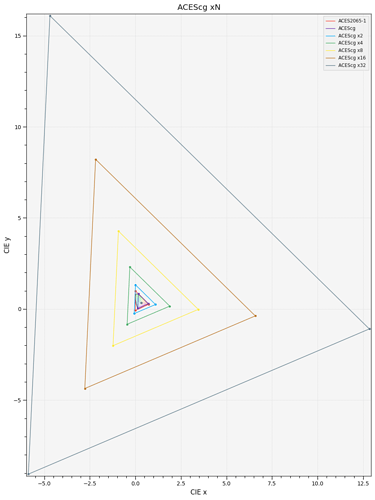I have continued the fitting work, slowly because I’m slammed, and got distracted easily. I was poking at some plots of scaled AP1/ACEScg to get a better grasp of their associated RGB values.
The RGB values of ACEScg x32 primaries are as follows:
[[-21.95870677 9.58788939 9.58788939]
[-0.65048598 1.79800924 -0.65048598]
[1.15541233 1.15541233 -1.73923715]]
A mere -22 for the largest negative value, even ignoring the various possible maximum representable values, I would be keen to find the largest meaningful values in all the imagery we have at disposal. I have some HDRIs reaching -10 in areas with chromatic aberration. Accounting for dead-pixels, below -200, but those are cases we should probably ignore.
Cheers,
Thomas
